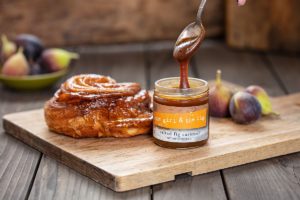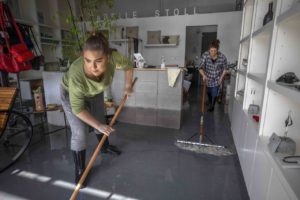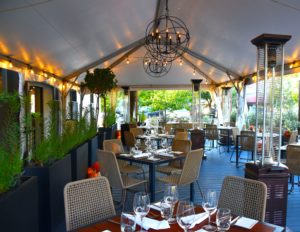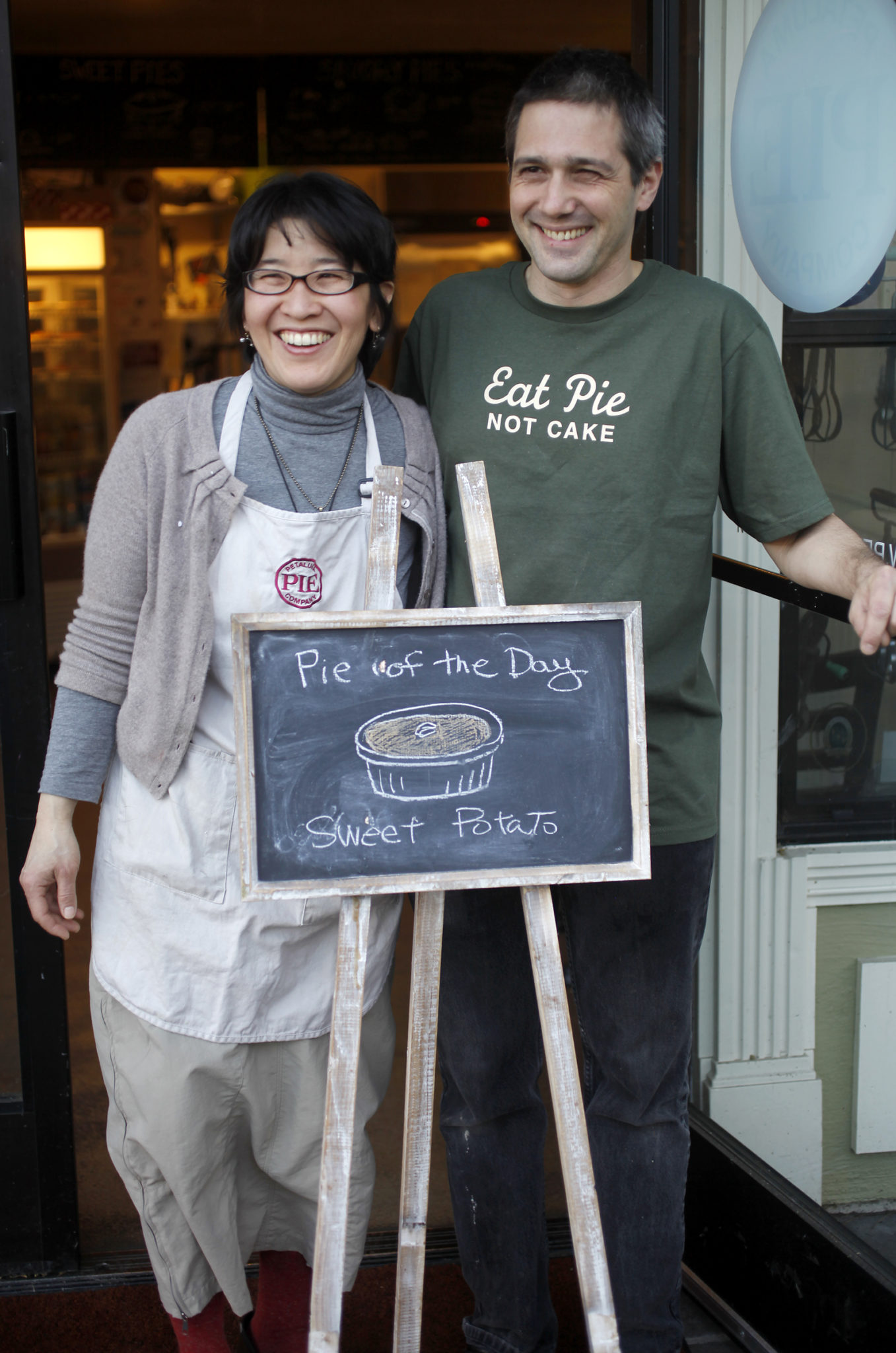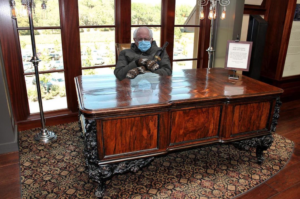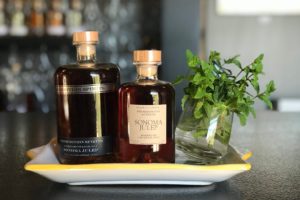Red wine with chocolate for Valentine’s Day: What could go wrong? A lot, actually.
Gifting wine and chocolate to a treasured one is impressively generous and traditionally romantic. But drinking a Sonoma dry red wine with high-quality dark chocolate can take all the helium out of the heart-shaped balloon attached to the basket. The natural bitterness and tannins in each can create a clash of titans in the mouth. So best to share, not pair, cabernet sauvignon and chocolate.
“People like wine, and people like chocolate, thinking that they go together,” said Ron Washam, who retired after working 19 years as sommelier at Pacific Dining Car, one of Los Angeles’ finest restaurants until it closed in 2020. Now a wine educator at Rodney Strong Vineyards in Healdsburg, Washam is blunt about his disdain for pairing chocolate with the dry red wines produced in California.
“The typical advice is to make sure the wine is as sweet as the chocolate, and that’s fine,” he explained. “But you still have to deal with the bitterness in both.”
Washam says that sweet, fortified red wines, such as port (he mentions Rodney Strong’s True Gentleman’s Port), can work well with a 70% dark chocolate. The bitterness in the chocolate offsets the sweetness of the port; mature ports, at least 10 years of age, typically have a nutty, dried-fruit character that complements dark chocolate with similar flavors.
“But for red table wines, the pairing with chocolate seems forced,” he said. “Pairings are supposed to make the food taste more interesting and the wine taste better. It’s better to enjoy the chocolate, and enjoy the wine separately.”
Of course, the best matches of wine and food are the ones you like. There are no rules for pairing, just suggestions and opinions. Yet when it comes to Valentine’s Day and our infatuation with wine and chocolate on that holiday, consider the advice of Washam and others who want you to experience peak moments of enjoying both: Try them separately.
Here are a few more suggestions.
A port maker’s perspective: Bill and Caryn Reading, Sonoma Portworks, Petaluma
Twenty-five years ago, Bill Reading realized that while his port-style red wines complemented chocolate, they weren’t drop-dead perfect with the finest-quality cacao dark chocolate. So the Sonoma Portworks’ founder/winemaker infused one of his local ports with natural chocolate flavoring and voilà, DECO was created. It’s an 18% alcohol, spirit-fortified dessert wine ($17 for 375 ml) with a subtle yet distinguishable dark chocolate note that accents the blueberry, black cherry and espresso notes of the wine and ties it to chocolate.
Purists will object, but fans of chocolate-flavored wines such as DECO are legion. Just ask the tasting room managers at Trentadue Winery in Geyserville and Ferrari-Carano Vineyards and Winery in Healdsburg, who sell impressive amounts of dessert wines with chocolaty notes gained from flavor infusions. Trentadue’s Chocolate Amore Port ($20) is made from merlot grapes fortified with neutral grape spirits and finished with chocolate flavoring. Ferrari-Carano’s Baci ($25) is a late-harvest zinfandel with dark-chocolate essence added before bottling.

Sonoma Portworks’ wide range of port-style wines (plus sherry and grappa) offer something for everyone with a sweet tooth and a desire to match wine with dessert. ARIS ($18), for example, is a blend of zinfandel, grenache and alicante bouchet grown in Southern California’s Temecula Valley, where warm days during the growing season produce ultra-ripe grapes that take well to a supplemental addition of distilled spirits. The resulting alcohol is 18%, with more than 7% residual sugar.
Sonoma Portworks, 613 Second St., Petaluma, 707-769-5203, portworks.com
Ferrari-Carano Vineyards and Winery, 8761 Dry Creek Road, Healdsburg, 707-433-6700, ferrani-carano.com
Trentadue Winery, 19170 Geyserville Ave., Geyserville, 707-433-3104, trentadue.com
A restaurateur perspective: Sondra Bernstein, the girl & the fig in Sonoma; the fig cafe in Glen Ellen
Sondra Bernstein, owner of two of Sonoma Valley’s finest restaurants, each with heavy leanings toward serving wines made from Rhone Valley grapes, confessed that red wine with chocolate is not her favorite pairing.
“We always have a chocolate dessert on the menu because a lot of people really want that with their meal,” she said. “But pairing chocolate with wine is difficult. I prefer to serve Banyuls, a fortified grenache (from the Roussillon region of France) that has a lot of sweetness, and we always have a bottle at the restaurants. For a locally made wine with chocolate, I like Loxton Cellars Sonoma Valley Port ($30), a fortified syrah. For big, fruity wines, I’m tempted to add some fruit to a chocolate dessert to bridge the flavors with the wine.”
Her chocolate and salted fig caramel trifle is a keen match for the Loxton port. “Portlandia” fans will understand: Just put a fig on it to make a better match.
the girl & the fig, 110 W. Spain St., Sonoma, 707-938-3634, thegirlandthefig.com
the fig cafe, 3690 Arnold Drive, Glen Ellen, 707-938-2130, thefigcafe.com
Loxton Cellars, 11466 Dunbar Road, Glen Ellen, 707-935-7221, loxtonwines.com
A winemaker perspective: Kathleen Inman, Inman Family Wines, Santa Rosa
“I love chocolate, but I’m not a big fan of chocolate with wine,” said Kathleen Inman, owner and winemaker at her Russian River Valley winery. “Chocolate accentuates the tannins in red wine and has fats that coat the palate, changing the wine’s texture and astringency. I want people to taste my wine for the wine; then they can taste the wine with chocolate and see for themselves. They’re often surprised at the difference.”
One particular chocolate, however, works splendidly with Inman’s OGV Estate Pinot Noir ($73), she said. It’s made by Jeff and Susan Mall of Volo Chocolate in Windsor. “Their Volo dark milk chocolate bar with dried figs (and almonds and hazelnuts) mirrors the earthy character of OGV,” Inman explained. “In tastings I do, guests taste a trio of wines, then taste them with the Volo bar. The caramelized sweetness of the fig seems to be a nice pairing with the chocolate, which also has sea salt and cinnamon.”
Inman Family Wines, 3900 Piner Road, Santa Rosa, 707-293-9576, inmanfamilywines.com
A chocolate maker’s perspective: Jeff and Susan Mall, Volo Chocolate, Windsor
Jeff and Susan Mall, who owned Zin restaurant in Healdsburg for a decade before decamping to Mexico to develop culinary programs, became interested in Mexican cacao beans and the chocolate made from them. They returned to Sonoma County in 2016 and founded Volo, using their chefs’ minds to include sea salt, cinnamon, New Mexico chiles, candied orange peel, olive oil and other nontraditional ingredients that add savoriness and flavor balance to their bars.
“A pinch of sea salt pulls out the other flavors and lowers the sugar content and bitterness of chocolate,” Jeff Mall said. “Wineries seem to like the result.”
The Malls have found regular customers in several local wine producers. Inman Family, Medlock Ames, Papapietro Perry and others sell Volo bars (about $8 each) in their tasting rooms, tuck them into wine club shipments and use them in virtual tastings. Volo flavors include Deep Dark, Chocolate Orange, Dark Cream Caramel Crunch and Dark Cream Mexicali, made with chiles and dried cherries.
“Even though we owned a restaurant named Zin and were known for the zinfandels on our wine list, we’ve found the varietal doesn’t pair well with our chocolate,” Jeff said. “Pinot noir and cabernet sauvignon seem to be the most successful reds with dark chocolate.”

The Malls make chocolate; other Sonoma confectioners purchase chocolate, such as Vahlrona from France, and create truffles and bonbons from it, adding their own flavors and artistic touches.
One of the newest and most sophisticated chocolatiers in Sonoma County is Fleur Sauvage Chocolates. Owners Robert and Tara Nieto add ganaches and other fillings that, depending on the ingredients, can turn tannic dark chocolate into a more wine-friendly mate. Fleur Sauvage also sells a goof-proof Valentine’s Day gift: a full-size chocolate wine bottle filled with truffles ($60). Save the actual wine for another date.
Volo Chocolate, 707-536-6764, volochocolate.com. Purchase online and at Oliver’s Markets in Santa Rosa, Cotati and Windsor; Miracle Plum in Santa Rosa and Big John’s Market and Russian River Tea Co. in Healdsburg.
Fleur Sauvage Chocolates, 707-235-8679, fleursauvagechocolates.com. Purchase online and look for Fleur Sauvage at farmers markets.



